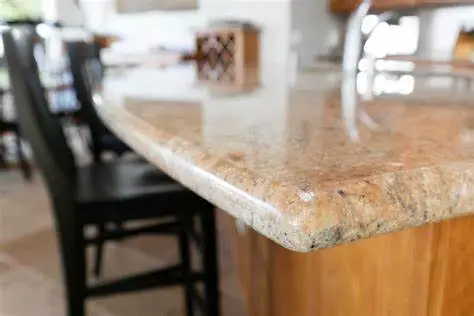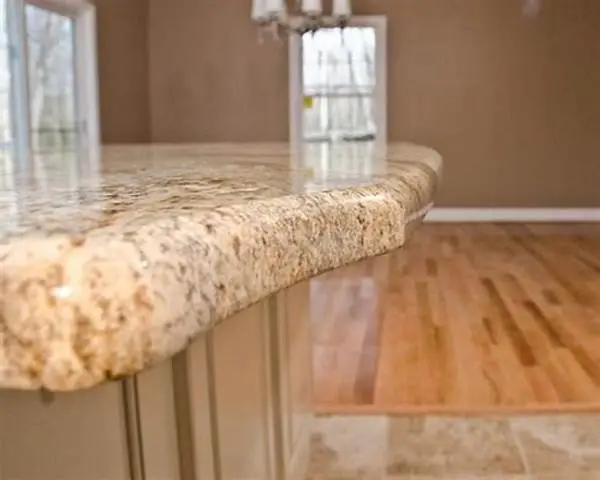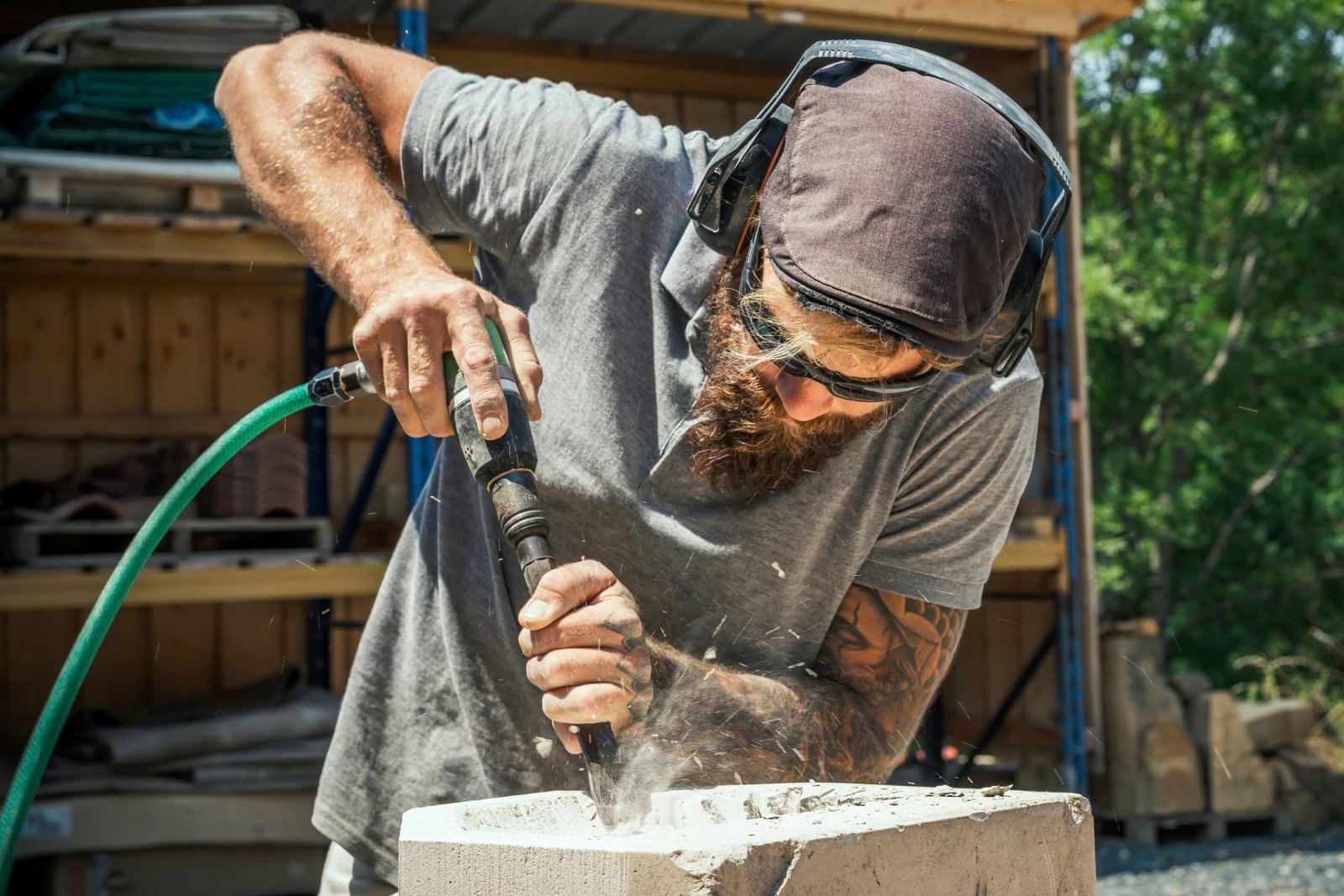
Granite countertops are more than just a slab of natural stone—it’s a timeless piece that elevates the style and value of your kitchen or bathroom
Granite countertops are more than just a slab of natural stone—it’s a timeless piece that elevates the style and value of your kitchen or bathroom. While selecting the stone and color is important, the edge profile is often overlooked. Learning how to edge granite countertops allows homeowners and fabricators to customize the aesthetic appeal of their surfaces while adding a professional, refined touch. Whether you’re installing a new kitchen countertop or polishing up an older one, this guide offers a detailed process on edging granite for beautiful results.

Why Edging Matters for Granite Countertops
The edge of a granite slab isn’t just decorative—it’s functional. Proper edging:
- Enhances the visual appeal of your granite countertop design.
- Prevents chipping and long-term granite countertop repair.
- Matches the overall theme of your kitchen countertop or bathroom decor.
- Increases resale value with a premium finish.
Popular Granite Countertop Edge Styles
Before diving into the edging process, here are the most common profiles to consider:
- Eased Edge: Slightly rounded, minimalistic style.
- Beveled Edge: Angled cut for a contemporary touch.
- Bullnose Edge: Fully rounded, perfect for families with children.
- Ogee Edge: Elegant, S-shaped curve ideal for luxury kitchens.
- Chiseled Edge: Raw, natural look great for rustic interiors.

Tools and Materials Needed
To edge a granite countertop, you’ll need:
- Angle grinder or wet polisher with variable speed
- Diamond polishing pads (coarse to fine grit: 50–3000)
- Clamps and support for the slab
- Safety gear (goggles, gloves, mask)
- Water source (for wet polishing)
- Ruler and pencil for marking
Step-by-Step: How to Edge Granite Countertops
1. Prepare the Granite Slab
Secure the slab on a sturdy work surface using clamps. Make sure it’s fully supported to prevent cracking or shifting.
🧭 Tip: Mark the desired granite countertop edge profile with a pencil or chalk.
2. Use Coarse Grit for Initial Shaping
Attach a 50-grit diamond pad to your grinder or wet polisher. Gently start shaping the edge based on your chosen profile.
- For eased or beveled edges, you’ll simply grind the angle.
- For bullnose or ogee, you’ll need more detailed passes and curve shaping.
3. Smooth with Medium Grit Pads
Move to a 100- or 200-grit pad to begin smoothing out the coarse lines. Keep the tool moving to avoid creating dips or heat marks. This is crucial for granite countertop maintenance, as smooth edges resist stains and moisture better.
4. Polish with Finer Grits
Gradually work your way up to 3000-grit pads. These will bring out the natural shine and remove micro-scratches.
If you’re working indoors, use a dry polisher and vacuum to avoid dust accumulation during granite countertop cleaning.
5. Optional: Apply Edge Sealant or Enhancer
Once polished, apply a granite edge sealant or color enhancer to:
- Protect against water absorption
- Boost depth and richness of granite countertop colors
- Preserve shine longer
DIY or Hire a Pro?
You can polish and edge granite at home with the right tools and care. However, for intricate profiles like ogee or chiseled edges, hiring a professional might be more cost-effective and visually appealing.
Also, large countertop installation jobs or renovations might require edge customization across multiple surfaces—making pro templating easier.
👉 How to Template Granite Countertops
Best Practices for Long-Term Granite Edge Maintenance
Once your edges are shaped and polished, protect them with proper granite countertop maintenance:
- Use cutting boards to prevent edge damage.
- Avoid acidic cleaners that degrade sealants.
- Reapply sealant yearly, especially on high-use edges like those around sinks or cooktops.
Explore more on granite countertop cleaning and care.
What If My Edge Gets Chipped?
Minor chips can be smoothed out with polishing pads. For deeper damage, use a granite epoxy filler or call a professional. This is especially important to maintain the value of premium granite countertop prices and finishes.
Frequently Asked Questions
How long does it take to edge a granite countertop?
- Around 1–2 hours per edge, depending on complexity and tools.
Can I edge a granite countertop that’s already installed?
- Yes, but it’s more difficult. Use handheld polishers with extra dust control.
Does edging increase the price of granite countertops?
- Yes. Custom edges like ogee or waterfall typically increase costs by $10–$30 per linear foot.
Additional Resources and Internal Links
- ✅ What Is a Granite Countertop?
- ✅ How to Template Granite Countertops
- ✅ How to Measure Cabinets for Granite Countertops
- ✅ What to Do with Leftover Marble Slab?
- ✅ How to Use a Marble Slab as a Food Prep Surface?
Final Thoughts
Knowing how to edge granite countertops is a valuable skill for homeowners, DIYers, and fabricators. Whether you want to refresh your kitchen look or save money on installation, proper edge work makes all the difference in durability and style. With the right tools, patience, and technique, you can transform a raw granite slab into a stunning, polished countertop centerpiece.
Need help designing or choosing your perfect edge? Bookmark this article for your next renovation project or countertop upgrade.

